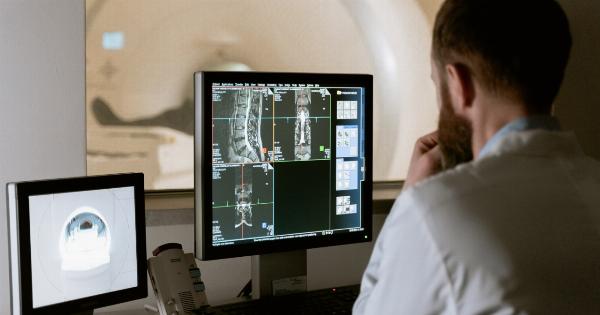Myocardial infarction, commonly known as a heart attack, is a grave medical condition that occurs when blood flow to the heart muscle is blocked. It is critical to diagnose an infarction promptly, as early treatment increases the chances of survival.
Historically, the diagnosis of infarction has been a time-consuming and complicated process, but with advances in technology, it is now possible to diagnose it quickly and effectively. This article will discuss the easy diagnosis of infarction and a quick way to get results.
What Is Infarction?
Myocardial infarction (MI) is a life-threatening condition that occurs when the blood supply to a part of the heart is cut off, resulting in damage or death of the heart muscle.
This lack of blood supply is typically caused by the formation of blood clots in the coronary arteries, which supply oxygen and nutrients to the heart. Infarction often happens when there is a blockage in a coronary artery that reduces blood flow, depriving a portion of the heart muscle of oxygen and nutrients.
Some common symptoms of infarction include chest pain, shortness of breath, nausea, vomiting, and cold sweats.
Traditional Diagnosis of Infarction
Until recently, the diagnosis of infarction was often based on clinical signs and symptoms, an electrocardiogram (ECG), and laboratory tests.
These traditional methods can be time-consuming and complicated, requiring a trained professional to interpret the results correctly. Before the advent of ECGs and laboratory testing, physicians have relied solely on the patients’ signs and symptoms to diagnose MI.
In the Emergency Department, an initial evaluation of the patient is conducted using a 12-lead ECG, which helps to detect MI. It provides information about the regularity of the heart’s rhythm and electrical activity.
ECG readings of infarction can reveal ST-segment elevation that occurs as a result of myocardial ischemia. These changes in the ECG are essential in the early diagnosis of an acute MI.
Additionally, blood tests, such as creatine kinase (CK), troponin, and myoglobin, are used to measure enzyme levels in the blood. These enzymes are released by damaged heart muscle cells, signaling that cells have been injured or dead.
Elevated levels of these enzymes in the blood confirmed the diagnosis of myocardial infarction. The laboratory test results often take hours or even days to complete, delaying the patient’s treatment.
Recent Advances in Infarction Diagnosis
Many new and innovative technologies have been developed over the past few decades, which have helped to diagnose infarction quickly and accurately.
One of the most significant advancement is the high sensitivity troponin assay, which has significantly decreased the time required to diagnose MI. It is a blood test that can detect lower levels of troponin, a protein released by damaged heart cells, much earlier than traditional tests.
The use of computed tomography (CT) scans to diagnose infarction has also gained popularity in recent years.
CT scans are noninvasive and can detect plaque buildup in the coronary arteries, allowing physicians to determine which patients are vulnerable to infarction and the extent of the damage already caused by the disease.
Another significant development in infarction diagnosis is the use of point-of-care (POC) testing devices. These portable devices are compact and easy to use, making them ideal for use in emergency settings.
The POC testing device is battery-operated and can provide results in less than ten minutes. Many POC assays include the use of biomarkers that are specific to myocardial injury and are highly sensitive and specific.
The Benefits of Easy Diagnosis of Infarction
The benefits of easy diagnosis of infarction cannot be overemphasized, as they have the potential to improve patient care significantly.
The use of high sensitivity troponin assays can facilitate the rapid diagnosis of infarction and allow for early intervention. Early diagnosis and treatment increase the chances of survival and help to prevent further damage to the heart.
The use of POC devices can reduce patient wait times and eliminate the need for patients to undergo conventional diagnostic methods. This can be especially useful in rural areas or settings where resources are limited.
Additionally, POC testing devices can help to minimize health care costs by reducing the need for hospitalization and unnecessary diagnostic procedures.
Conclusion
In conclusion, advances in medical technology have made it possible to diagnose infarction much more quickly than in the past.
High sensitivity troponin assays, CT scans, and POC testing devices are now available, making it easy to diagnose infarction and improve patient care. The ability to diagnose infarction promptly is crucial, as it increases survival rates and ensures that patients receive the appropriate treatment.






















